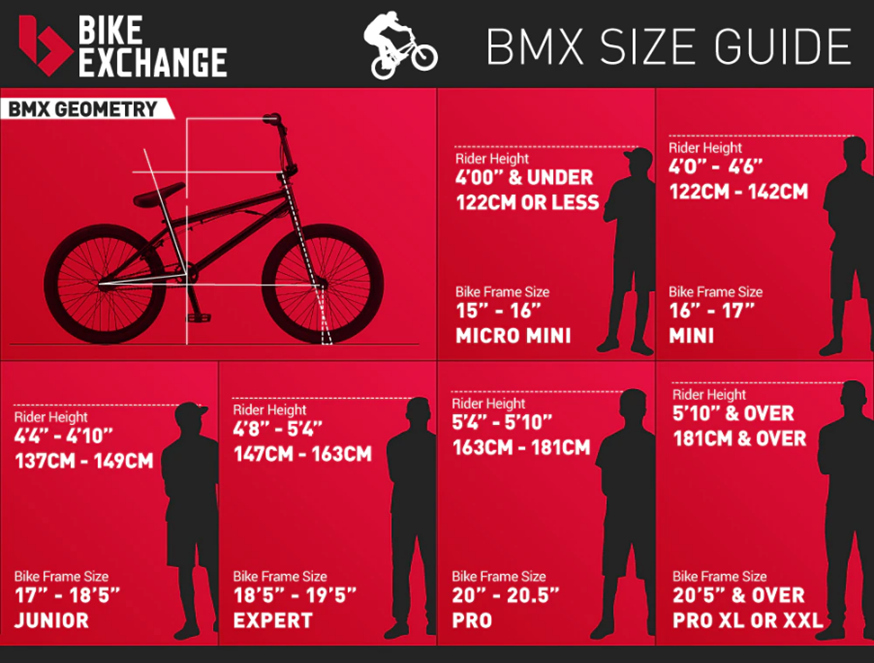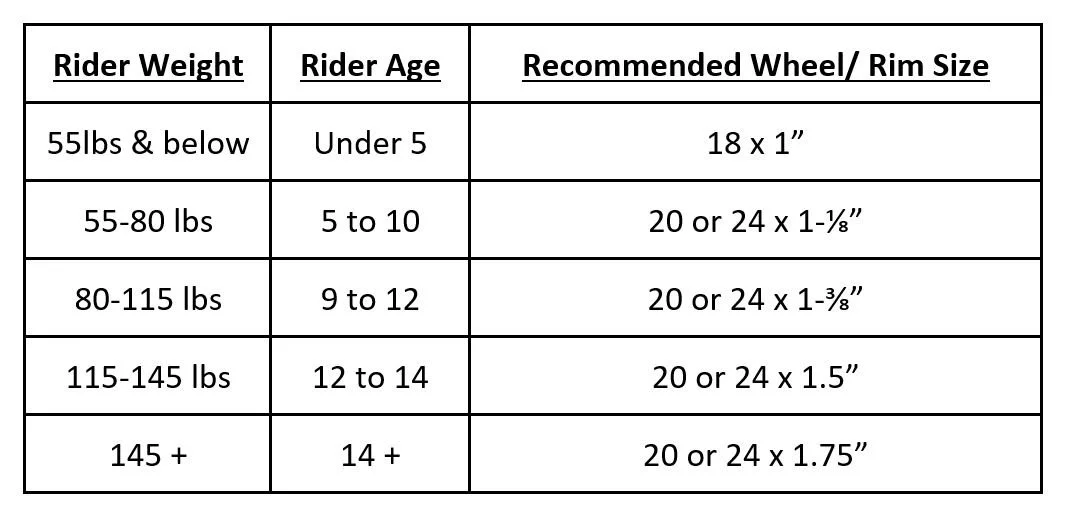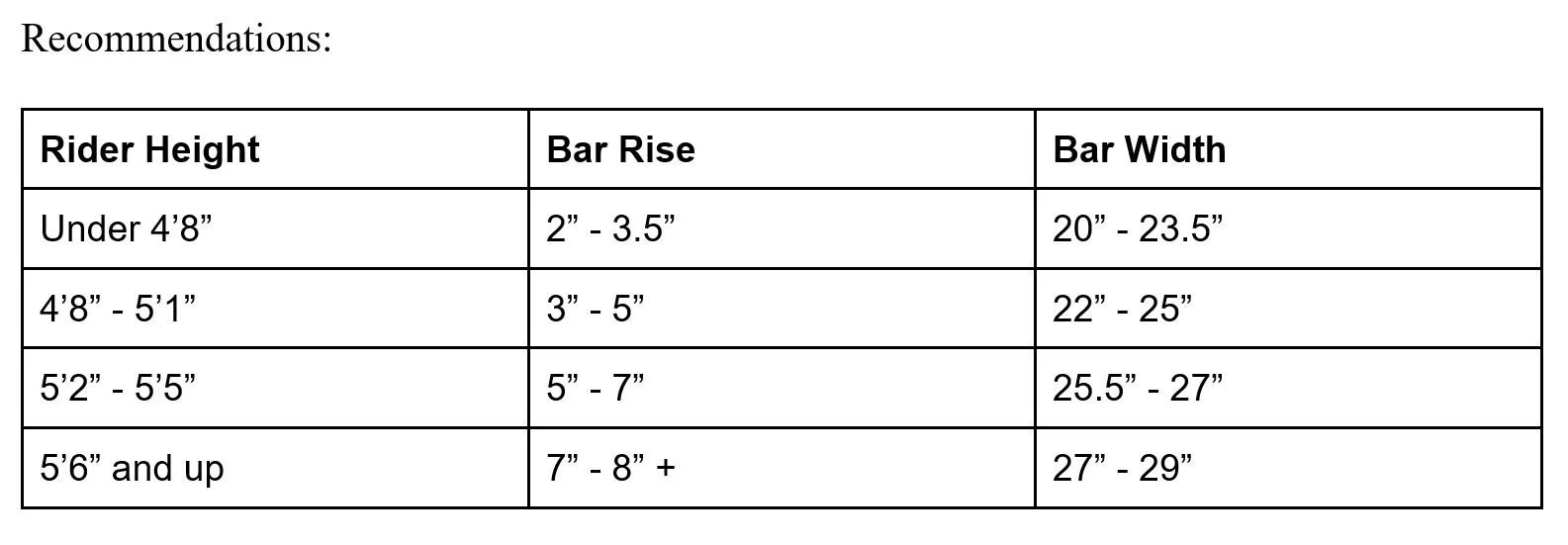BIKE SIZING GUIDE
Frame Sizing
Understanding Frame Sizes
BMX frame sizes are usually labeled by category—Mini, Junior, Expert, Pro—but the actual dimensions can vary between brands.
For example, an Expert-size Meybo Holeshot frame has a top tube length of 19.7", while an Expert-size Sunn Prince frame is 19.3". That small difference in measurement can make a big difference in how the bike feels and handles.
Always check the actual frame dimensions—not just the size label—to make sure it’s the right fit for your rider.
BMX Size Guide – Choosing the Right Fit
Use the size chart below to find the recommended top tube length based on your rider's height. Choosing the right size helps ensure your rider can perform well on the track and stay in control.
While it might seem like a good idea to buy a slightly larger frame so your rider can use it for a few years, we don’t recommend going too big. A frame that’s too large can be harder to handle and may hold your rider back.
Rider Stance
Understanding Q-Factor and Rider Stance
Q-factor is the total width measured from the outside of one crank arm to the other. While it's a standard bike measurement, what really matters is your rider’s foot stance—the distance between their feet while pedaling.
Why stance matters:
If their feet are too far apart, they’ll lose power.
If their feet are too close together, they’ll feel unstable—especially in corners.
A good guideline is to match their stance to how they naturally stand with feet shoulder-width apart. This helps keep them comfortable, powerful, and in control all around the track.
You can adjust stance using different combinations of bottom brackets, crank arms, and pedal spacers.
Wheels and Tires
Choosing the Right Wheel and Tire Size
Important:
Do not use a tire that is too small for the rider’s weight. Tires that are too narrow won’t offer enough support and can affect performance, comfort, and safety—especially during hard landings or aggressive riding.
BMX Wheel Types:
A BMX Challenge bike typically uses a 20” wheel (the most common size).
A BMX Cruiser uses a 24” wheel.
Each bike can be fitted with different tire widths to better match the rider’s weight and riding style.
If the rider is heavier, or rides more aggressively (e.g. jumping), consider using a wider tire for better support and control.
Watch Out for Tire Sizing Confusion:
Not all tires labeled the same are the same size—different brands and tire widths can change the actual wheel diameter.
Fractional-sized tires (like 1-⅜”) fit larger diameter rims than decimal-sized tires (like 1.5”), even if they seem similar.
Always check the ISO size (international standard for tire and wheel sizing) to make sure everything fits properly.
Crank Sizing
Choosing the Right Crank Length
The most important thing to remember when choosing crank length is to avoid going too long. Cranks that are too long can cause your rider’s hips to rock side to side while pedaling. This makes pedaling less efficient and harder to control.
Pedaling should feel smooth and fast. While longer cranks can give more power off the start, they make it harder to keep a high cadence.
One of the easiest ways to find the right crank length is by using the method from the Helium BMX website:
Measure your rider’s inseam (with their racing shoes on) in inches.
Divide that number by 0.173 to get the ideal crank length in millimeters.
Example:
If a rider’s inseam is 30.00", divide by 0.173 → result: 173 mm.
This means a crank length of 170 mm or 175 mm would be ideal.
If your rider is still growing, it’s better to choose the longer option—in this case, 175 mm.
Handlebars
Choosing the Right Handlebars
Handlebar size—both height (rise) and width—can make a big difference in rider comfort and performance.
Handlebar Height (Rise):
Rise typically ranges from 3" to 8", and the right choice depends on the rider’s height and the size of their bike. A well-sized handlebar helps transfer power more effectively, especially through rhythm sections.
Important: Some handlebars are made lighter for smaller riders and have maximum weight limits. Always check the manufacturer’s recommendations.
Handlebar Width:
The rider’s hands should sit about shoulder-width apart when gripping the bars. If the bars are too wide, they can be cut down to the right size.
Gearing
Understanding BMX Gearing
Gearing should match your rider’s strength, cadence ability, and riding style. When we talk about easy vs. hard gearing, we’re referring to how much effort it takes to get the bike moving and how much distance the bike covers per crank rotation (measured in gear inches).
How Gearing Works
Lower gear inches (easier gearing) = quicker acceleration, but harder to maintain at high speeds because it requires a faster cadence (more pedal revolutions per second).
Higher gear inches (harder gearing) = slower off the line, but better for maintaining speed once up to pace.
Your goal is to find the right balance:
Use the lowest (easiest) gear that your rider can still manage at high cadences without spinning out. This allows for the fastest acceleration while still being able to maintain top-end speed. Riders who train for higher cadence can get more benefit from easier gearing.
Top-performing adult riders typically use gearing in the 53–55 gear inch range.
You can use the BMXUltra.com gear chart to explore different gear and wheel size combinations.
Recommended Gear Inches by Bike Size:
Micro: 45-47 gear inches
Mini : 47-49 gear inches
Junior: 49-52 gear inches
Expert: 51-53 gear inches
Pro: 52-55 gear inches




